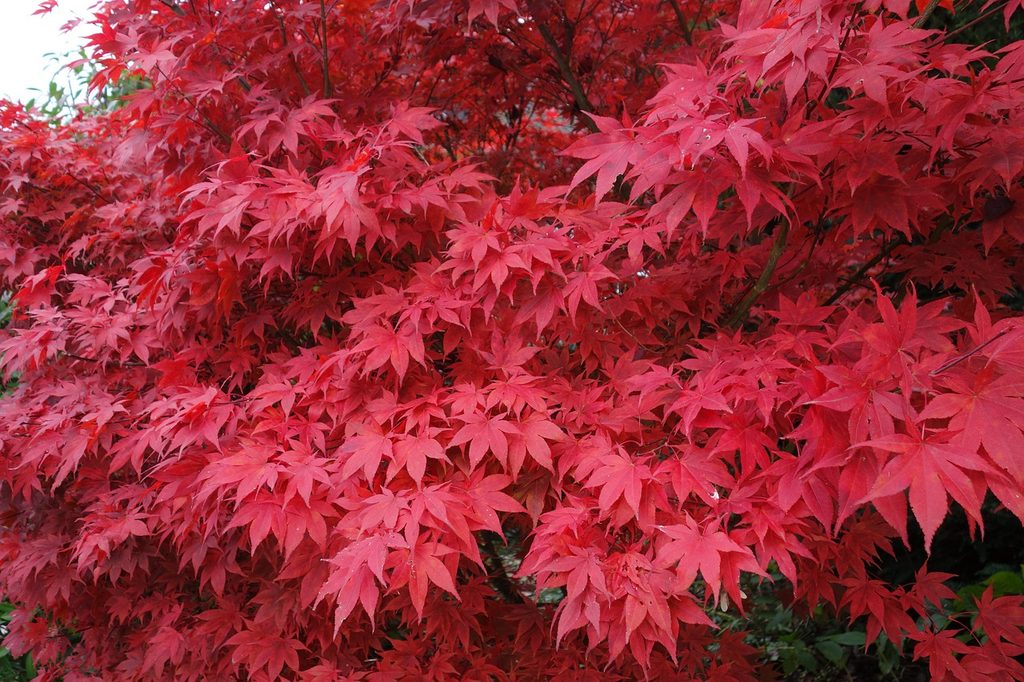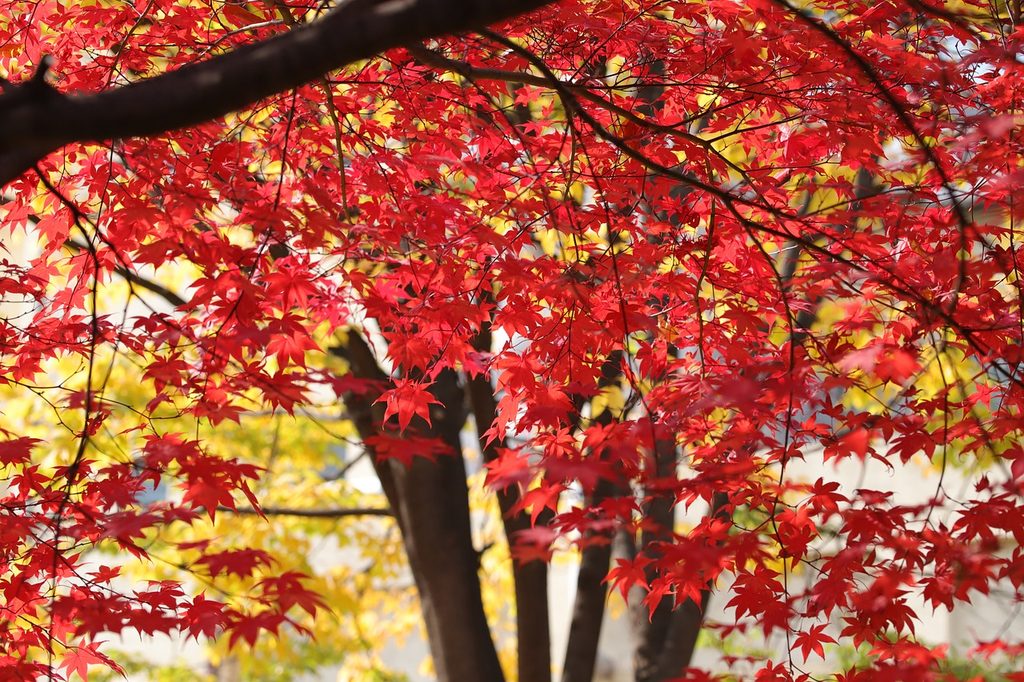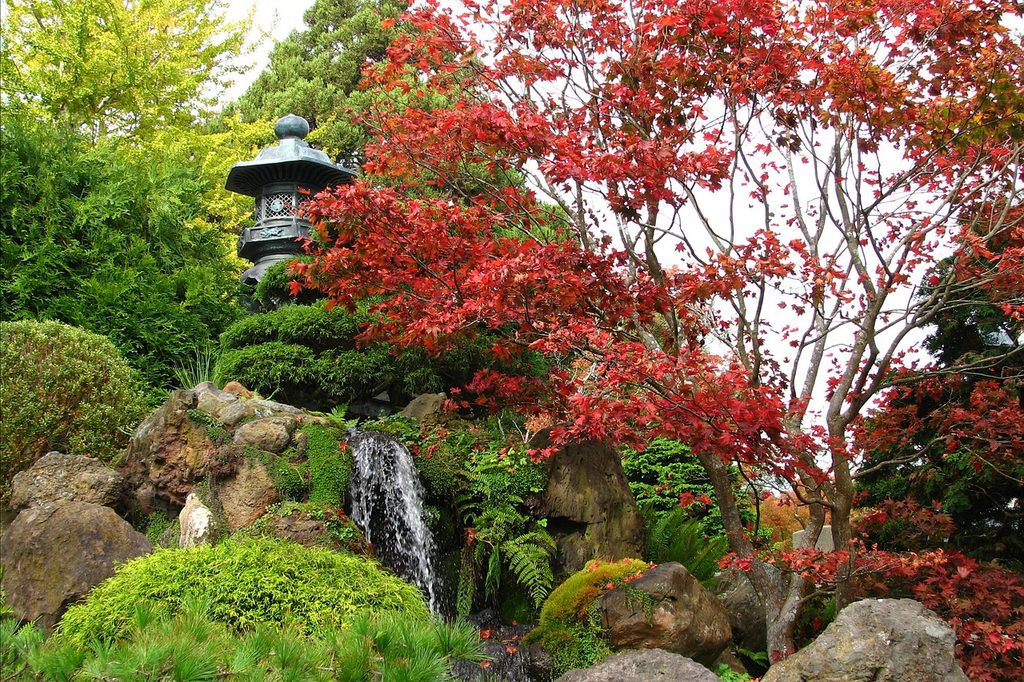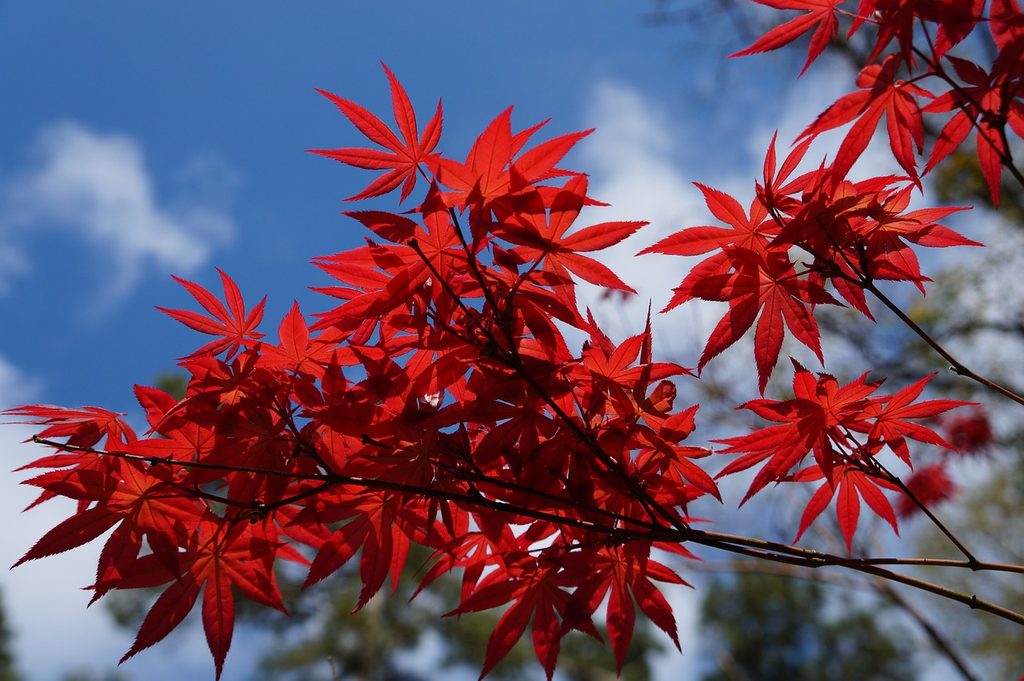
Maple trees are beautiful trees, prized for their stunning foliage and sap that can be turned into a delicious syrup. Japanese maple trees are a type of maple that is popular for their smaller size, brilliant leaves, and adaptability. If you want to add this tree to your yard or garden, you’ll be happy to know that Japanese maple trees are easy to care for.
To get started growing this lovely tree for yourself, here is a complete care guide. From planting to pruning, we’ll explain everything you need to know.

Planting a Japanese maple
First, choose the variety of Japanese maple that fits your size constraints. There are smaller varieties that stay between 8 and 10 feet tall, and taller varieties that can grow up to 30 feet tall. Dwarf varieties are excellent for small yards and gardens, containers, and greenhouses.
No matter which variety you choose, plant your Japanese maple tree in partial or dappled sun. An area that’s protected during the afternoon by taller trees or structures is ideal, as bright, direct light can burn Japanese maples. Plant your Japanese maple in spring or fall to avoid exposing the young tree to extreme heat before it has a chance to become established.
Japanese maple trees are highly tolerant of different soil types. Acidic, slightly alkaline, and neutral soil types are all perfectly fine for Japanese maples, as long as it’s well-draining soil. The only soil type that causes significant problems for Japanese maples are significantly alkaline soils.

Caring for a Japanese maple
Water your Japanese maple regularly, especially during hot weather and when the tree is young. Japanese maple trees are a great candidate for drip irrigation or other types of automated watering systems, particularly those that stay near the ground and will not spray the tree’s leaves. Due to the need for frequent watering, most gardeners have more success with liquid fertilizers, which can be incorporated into the watering routine, than with granule fertilizers that must be mixed into the soil.
Consider adding a layer of mulch around the base of your Japanese maple tree. Bark or leaf mulch are two great choices, but there are plenty of mulch options available for you to choose from. Mulch helps protect the roots from frost, but it also improves water retention, keeping your Japanese maple hydrated. If you do use mulch, avoid placing it directly against the trunk. Instead, create a small break between the mulch and the trunk. This is because damp mulch can rub against the trunk, causing small cuts and raw spots that are vulnerable to pests and diseases.

Pruning Japanese maples
Pruning your Japanese maple should come in two main phases, with the type of pruning determining what time of year the pruning is completed. Structural pruning, which includes removing large branches to change the shape, size, and spacing of the Japanese maple, should be done in winter when the tree is dormant. This reduces the stress caused by removing large branches. Structural pruning with Japanese maples typically means removing the lowest branches a few at a time.
The second phase of pruning occurs in late spring or early summer, after the tree has grown leaves. This phase involves removing smaller branches, especially those that are rubbing against another branch, growing at an odd angle, or those that need to be removed to improve airflow. This is a good time to do any trimming or simple shaping, to make your Japanese maple look neater. Pruning that focuses on removing dead, damaged, or diseased branches can be done at any time.

Common pests and diseases
Japanese maple trees are vulnerable to a few different kinds of pests. While proper care can reduce the impact these pests have, the best way to prevent damage is to apply an organic pesticide or pest repellent, such as neem oil or an insecticidal soap. Luckily, they are not prone to too many diseases, but they can develop fungal infections caused by wet leaves or improper soil drainage.
Some of the most common pests that plague Japanese maple trees are small leaf-eating insects, such as aphids, miles, beetles, mealybugs, and scale. These insects are attracted to overwatered plants or damp soil, particularly those already suffering from fungal infections. Since Japanese maple trees love moist soil, planting them in well-draining soil and watching closely for signs of fungal infections is an important method of pest prevention.
Aside from water-based problems, the most common infection Japanese maple trees suffer from is verticillium wilt. This is caused by a family of fungi that live in the soil and infect specific plant types. It causes trees to drop their leaves and wilt, and it eventually kills them. Unfortunately, there is no treatment for verticillium wilt and it can live in the soil for up to 10 years. If you’ve encountered verticillium wilt in your yard or garden, avoid planting anything in the area.
With this guide, you’re ready to plant and grow a Japanese maple in your yard or garden. This stunning tree looks great alongside other maples and flowering shrubs and as a centerpiece surrounded by flowers. You can even grow it in a container or greenhouse, although it will need more regular pruning. No matter what your plans are for this tree, your Japanese maple is sure to look great, and, most importantly, it will be healthy and thriving.


